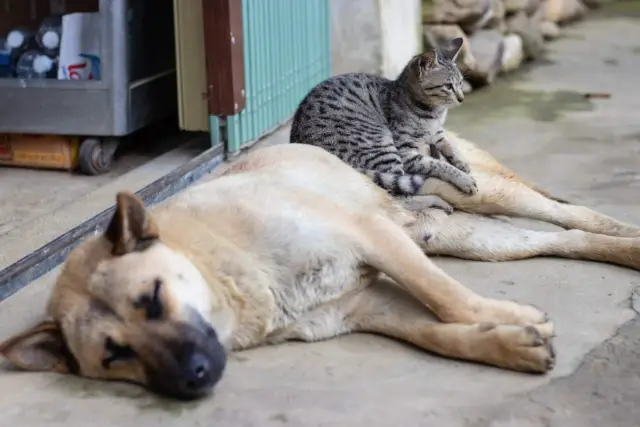
The sense of smell is a remarkable ability that plays a crucial role in the lives of many animals. From tracking prey to finding mates, the olfactory system is a powerful tool for survival and communication. Among the animal kingdom, cats and dogs are two species known for their exceptional sense of smell. But the question remains: can cats really outsniff man’s best friend?
Understanding the Olfactory Systems of Cats and Dogs
To understand whether cats can outsniff dogs, it is important to delve into the intricacies of their respective olfactory systems. Both cats and dogs have highly developed scent receptors, which allow them to detect a wide range of odors. However, there are some fundamental differences between the two.
Can Cats Really Outsniff Dogs?
The idea that cats can outsniff dogs is a topic of much debate among pet owners and animal enthusiasts. While both species have impressive olfactory abilities, there is evidence to suggest that cats may have a slight advantage in certain aspects. However, it is important to note that this advantage does not necessarily mean that cats are superior to dogs in all scent-related tasks.
The Scientific Evidence Behind Cats’ Sense of Smell
Scientific studies have shown that cats possess a highly developed sense of smell. Research has revealed that cats have approximately 200 million scent receptors in their noses, compared to only 160 million in dogs. This higher number of scent receptors may contribute to cats’ ability to detect and discriminate between different odors more effectively than dogs.
The Scent Receptors in Cats vs. Dogs
The number of scent receptors is not the only factor that determines the olfactory abilities of cats and dogs. The structure and distribution of these receptors also play a crucial role. Cats have a specialized organ called the vomeronasal organ, which is responsible for detecting pheromones and other chemical signals. This organ allows cats to pick up on subtle scents that may go unnoticed by dogs.
Factors That Affect Cats’ and Dogs’ Sense of Smell
While cats may have more scent receptors and a specialized organ, there are other factors that can influence the overall performance of their olfactory systems. Factors such as breed, individual variations, and training can have a significant impact on the scent detection abilities of both cats and dogs. Therefore, it is not accurate to make a blanket statement that all cats can outsniff all dogs.
Comparing the Sniffing Abilities of Cats and Dogs in Real-Life Scenarios
To truly determine whether cats can outsniff dogs, it is important to compare their sniffing abilities in real-life scenarios. In controlled experiments, dogs have been found to excel in tasks such as tracking scents over long distances or detecting specific odors, such as drugs or explosives. On the other hand, cats have been shown to be highly skilled at detecting and responding to pheromones, which play a crucial role in their social behavior.
How Cats and Dogs Use Their Sense of Smell Differently
While both cats and dogs rely on their sense of smell, they use it in different ways. Dogs are known for their tracking abilities, which make them indispensable in search and rescue operations. Cats, on the other hand, use their sense of smell primarily for communication. They mark their territories with scent, and the presence of certain odors can trigger specific behaviors.
The Role of Scent in Cats’ and Dogs’ Behavior and Communication
Scent is an integral part of cats’ and dogs’ behavior and communication. For cats, scent marking is a way to establish territory and communicate with other cats. It also helps them navigate their environment and find their way back home. Dogs, on the other hand, use scent to gather information about their surroundings and communicate with other dogs. For both species, scent is a powerful tool that shapes their interactions with the world.
Appreciating the Unique Olfactory Abilities of Cats and Dogs
In conclusion, cats and dogs both possess remarkable olfactory abilities. While cats may have a slight advantage in certain aspects of scent detection, it is important to appreciate the unique strengths of each species. Dogs excel in tasks that require long-distance tracking and detection of specific odors, while cats are highly skilled at detecting and responding to pheromones. Ultimately, both cats and dogs are extraordinary creatures with a keen sense of smell that enhances their lives and interactions with the world around them.
If you enjoyed my article, I would appreciate you sharing it with your network.

Sima Ndlebe
Sima writes for CatBuzz. He is interested in Cats, Health and Fitness, and Entrepreneurship.
Published: 14 November 2023




